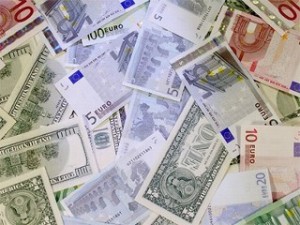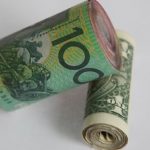 The euro declined against the US dollar, following overall upbeat US data that may prompt the Fed to taper as early as next week.
The euro declined against the US dollar, following overall upbeat US data that may prompt the Fed to taper as early as next week.
EUR/USD traded at 1.3734 at 15:30 GMT,losing 0.15% for the day. Support was likely to be received at December 9th low, 1.3695, while resistance was to be encountered at December 12th high, 1.3803. On Wednesday, the pair traded at 1.3811, touching the highest level since October 29th.
The U.S Bureau of Labor Statistics released a report that showed the producer price inflation in November fell by seasonally adjusted 0.1% in line with expectations. Prices of finished goods declined 0.2% in October and 0.1% in September. On an unadjusted basis, the PPI rose 0.7% in November during the 12 months through November, short of analysts projections of a 0.8% increase. In October the PPI increased 0.3% compared to the same month a year ago. The Producer Price Index (PPI) measures the change in the price of goods sold by manufacturers. It can be seen as a leading indicator of consumer price inflation, which represents the majority of overall inflation.
A separate report showed that Core PPI rose by 0.1% in November in line with analysts expectations. In October the index increased by 0.2%. On a year-on-year basis, Core PPI increased 1.3%, short of analysts projections of a 1.4% increase and compared to another 1.4% gain in October. The Core Producer Price Index measures the change in the selling price of goods and services sold by producers, excluding food and energy.
On Thursday, the Commerce Department reported that retail sales rose solidly in November as Americans purchased automobiles and a range of other goods. Retail sales rose by 0.7% last month, beating analysts’ projections for a 0.6% gain, while October’s reading received an upward revision to 0.6% from initially estimated at 0.4%. The upbeat general indicator was lifted by a 1.8% jump in sales at auto and parts dealers, which offset a 1.1% decline in fuel prices.
Retail sales less autos, which exclude the volatile automobile sales, rose by 0.4% from an upwardly revised 0.5% a month earlier, exceeding expectations of a 0.2% advance.
Core retail sales, which exclude automobiles, food services, gasoline and building materials and correspond more closely to the consumer spending component of GDP jumped by 0.5% after advancing 0.7% in October.
The overall upbeat US data added to the steadily building-up positive sentiment for the US economic recovery, increasing bets for a Fed tapering.
Demand for the greenback was supported by speculations that an agreement on a two-year US budget deal could prompt the Fed to taper its stimulus program, which tends to devalue the US dollar. Central bankers are set to reconvene next week. According to 34% of economists, participated in a Bloomberg survey on December 6th, the FOMC may begin to scale back its 85-billion-USD monthly asset purchases at the committee’s policy meeting on December 17th-18th rather than wait until January or March.
Meanwhile, on Thursday, data by Eurostat, showed that the industrial output in the 17-nations common area declined 1.1% in October from a month earlier. Median analysts’ estimate predicted the industrial production will rise 0.3% this month. In September, the industrial output was revised to a 0.2% decline, compared to initially estimated drop of 0.5%. On annual basis, output in the industry sector added a mere 0.2% in October, short of analysts’ expectations of a 1.1% gain and after it gained 0.2% in the previous month. The report showed that overall decline in industrial production was mainly driven by a 2.4% decrease in production of durable consumer goods and a 4% drop in energy production.
“While there is an economic recovery in the euro area, the momentum is slowing, but for the euro to take a sustained hit to the downside we definitely need the ECB to really move to a more dovish message,” said Alvin Tan, a London-based director of foreign-exchange strategy at Societe Generale SA, cited by Bloomberg.
The ECB decided at its meeting on December 5th to keep the main refinancing rate unchanged at 0.25 percent, while ECB President Mario Draghi had said that borrowing costs will stay low for an extended period of time.
The euro was the best performer among 10 developed-nation currencies, tracked by Bloomberg Correlation-Weighted Indexes, gaining 9.5% in the past year, while the greenback had appreciated 4%.
Elsewhere, USD/CHF traded at 0.8911 at 12:44 GMT, gaining 0.21% on a daily basis. On December 11th the pair touched the lowest level since November 4th 2011. Support was likely to be received at December 12th low, 0.8848, while resistance was to be encountered at December 9th high, 0.8934.





